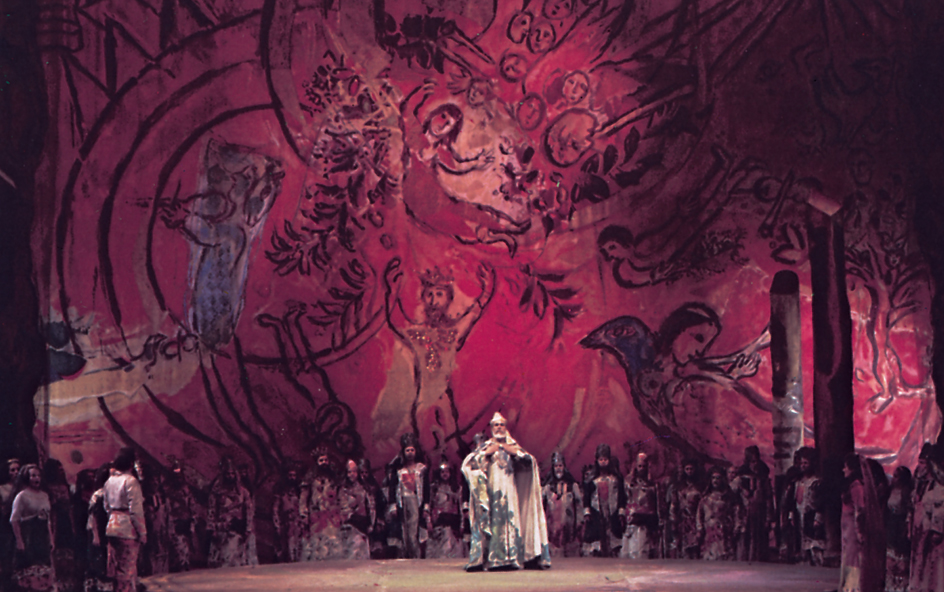Magic Flute, The, is a fairy-tale opera in two acts by the Austrian composer Wolfgang Amadeus Mozart . Its English name is a translation of the German title Die Zauberflöte. The libretto (text) was written in German by Emanuel Schikaneder, and the work was first performed in Vienna, Austria, on Sept. 30, 1791.

Technically, The Magic Flute is a Singspiel—that is, a mix of singing and spoken dialogue. Schikaneder drew some of his text from Oriental fairy tales. But both he and Mozart were members of a secret society called the Masons, and much of The Magic Flute deals symbolically with Masonic beliefs and rituals. However, the opera can be enjoyed as a fairy tale about two lovers, Tamino and Pamina. The opera takes its name from a magic flute that protects Tamino from danger.
The Magic Flute is set in ancient Egypt, but in modern productions the opera is often updated and moved to other locations. The story tells how Tamino, a Japanese prince, is rescued from a serpent by the Three Ladies of the Queen of the Night. They show him a picture of Pamina, the queen’s daughter, who has been abducted by Sarastro, who they say is the queen’s wicked enemy. Tamino instantly falls in love with Pamina’s picture and, with the aid of the magic flute he is given, goes off to search for her. Aiding him in his quest is Papageno, a bird catcher. They receive a set of magic bells along with the flute to protect them.
Loading the player...The Magic Flute Overture
Tamino and Papageno are led to Sarastro’s palace, where Pamina is being terrorized by Monostatos, a wicked Moor serving Sarastro. Papageno blunders in and leads Pamina to Tamino. Meanwhile, Tamino finds himself inside a temple, where a priest tells him that it is the Queen of the Night who is evil, not Sarastro. Brought together by Papageno, Tamino and Pamina finally meet and fall in love.
Tamino and Pamina must now undergo a series of trials, culminating in the tests of fire and water. They are protected by Tamino’s magic flute and emerge unscathed. The queen’s attempt to overthrow Sarastro is thwarted, and she, her ladies, and Monostatos are engulfed by a clap of thunder. Papageno, having failed all his trials, is about to hang himself but is rewarded with Papagena, a girl who looks just like him. The followers of Sarastro celebrate the victory of light over darkness, and the opera ends with a chorus of praise and thanks to the gods Isis and Osiris.
The opera is fundamentally a serious one, expressing the theme of the triumph of good over evil. But it has much comedy, provided by Papageno. The music Mozart composed for him resembles simple folk songs, contrasting with the serious, deeply moving arias of Pamina and Tamino. The Queen of the Night performs two arias that can be showcases for a soprano capable of singing with agility in a very high range. The overture to the opera is often performed as a separate work in concerts.
